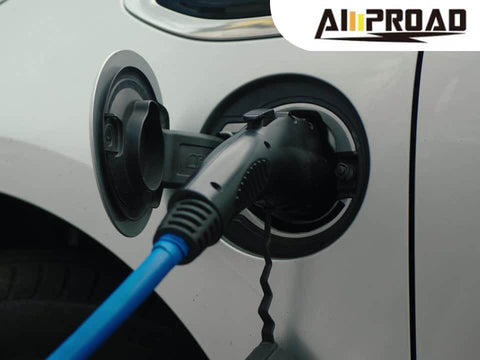
Wondering how often to charge your electric vehicle (EV) for the best battery longevity? Delve into the intricacies with us. Discover if there's an ideal charging frequency that prolongs your EV's battery lifespan and uncover the critical factors influencing this decision. From understanding battery degradation to exploring the impact of charging habits, we'll unravel the complexities. By the end, you'll be equipped with the knowledge to make informed decisions about charging frequency, ensuring your EV remains powered up for the long haul while preserving its battery health.
What Is Battery Degradation?
Concerned about your electric vehicle (EV) battery's lifespan? Let's explore how charging frequency impacts battery degradation and uncover strategies to maximize longevity.
How does charging frequency affect the degradation of EV batteries?
Charging frequency plays a crucial role in the degradation of EV batteries. Each charging cycle introduces wear and tear on the battery cells, contributing to gradual degradation over time. Frequent charging increases the number of cycles the battery undergoes, which can accelerate degradation. Conversely, infrequent charging may lead to shallow discharge cycles, which can also impact battery health negatively. Finding the right balance in charging frequency is essential to minimize degradation and maximize battery lifespan.
Are there specific charging habits that can accelerate or mitigate battery degradation?
Yes, certain charging habits can either accelerate or mitigate battery degradation. For instance, consistently charging the battery to its maximum capacity or allowing it to remain at high states of charge for prolonged periods can accelerate degradation. Similarly, subjecting the battery to frequent deep discharge cycles can also accelerate wear and tear. On the other hand, adopting charging practices that avoid extremes, such as maintaining the state of charge within a moderate range and avoiding frequent deep discharges, can help mitigate degradation. Additionally, utilizing smart charging features available in some EV chargers can optimize charging cycles to minimize stress on the battery cells, further extending battery lifespan. By adopting mindful charging habits and leveraging advanced charging technologies, EV owners can effectively mitigate battery degradation and preserve their battery's health for long-term use.
Battery Health and Charging Practices
How does the depth of discharge impact battery health, and how does this relate to charging frequency?
The depth of discharge, or how much of the battery's capacity is used before recharging, significantly influences battery health. Deep discharges, where the battery is drained to low levels frequently, can accelerate battery degradation. This is particularly true when combined with high charging frequencies. Each deep discharge cycle places more stress on the battery cells, leading to increased wear and tear over time. Therefore, minimizing deep discharges and maintaining the battery's state of charge within a moderate range can help preserve battery health, especially when paired with a balanced charging frequency.
Is there a correlation between charging frequency and the overall health of an EV battery?
Yes, there is a correlation between charging frequency and the overall health of an EV battery. While frequent charging is necessary for maintaining the vehicle's range and usability, excessive charging can contribute to premature battery degradation. Each charging cycle introduces a degree of stress on the battery cells, and as the frequency of charging increases, so does the cumulative wear on the battery. However, the impact of charging frequency on battery health can be mitigated by adopting smart charging practices and utilizing appropriate charging equipment, such as an EVSE home charger. By balancing charging frequency with other factors, such as depth of discharge and charging duration, EV owners can optimize battery health and prolong the lifespan of their EV's battery.
Charging Strategies for Longevity
Electric vehicles (EVs) are becoming increasingly popular, and with good reason. They offer a clean, efficient driving experience. But just like any vehicle, proper care is essential to ensure your EV performs at its best for years to come. One crucial aspect of EV care is charging – and not just about keeping the battery topped off. Specific charging strategies can significantly impact your battery's lifespan.
Maximizing Battery Lifespan Through Smart Charging:
EV batteries, similar to our phone batteries, can degrade over time. The good news is there are ways to slow down this process and extend the life of your EV's battery. Here are some recommended strategies:
- Embrace Level 2 Charging: Whenever possible, prioritize Level 2 charging at home over standard outlets. Level 2 EV charger, provides a faster and more balanced charge compared to a regular outlet. Think of it like a healthy meal versus a sugary snack for your battery. While standard outlets can work in a pinch, relying on them for regular charging can put stress on the battery and accelerate degradation.
- Avoid Frequent Full Charges: While convenient, aiming for a full charge (100%) every time might not be ideal for long-term battery health. Studies suggest that keeping the charge level between 20% and 80% can be beneficial. This can be easily achieved by plugging in your EV at night and aiming for a charge that meets your daily driving needs.
- Minimize High-Speed DC Fast Charging: While DC fast charging stations offer the undeniable advantage of a quick charge, frequent use can generate heat, which can stress the battery. Reserve fast charging for situations where you truly need a rapid top-up on the go. For regular charging, rely on Level 2 chargers or standard outlets when necessary.
Finding the Balance: Convenience vs. Battery Care:
Modern EVs are designed to handle occasional fast charging without significant drawbacks. The key is to strike a balance between convenience and battery longevity. Here are some tips:
- Plan Your Charging: Utilize apps that show charging station locations and plan your trips accordingly. This allows you to prioritize Level 2 charging whenever possible and minimize reliance on fast charging.
- Quick Top-Ups When Needed: Don't shy away from fast charging entirely. Think of it as a helpful tool for occasional situations where you need a quick boost.
- Prioritize Daily Charging Habits: Focus on developing daily charging habits that prioritize battery health. This could involve plugging in your EV at night for a Level 2 charge or standard outlet charge, aiming for a charge level that meets your daily driving needs.
By following these strategies, you can ensure your EV battery stays healthy for many miles to come. Remember, a little planning and conscious charging habits go a long way in maximizing the lifespan of your EV's heart – the battery.
Monitoring Battery Health

How can EV owners monitor the health of their battery over time?
Monitoring the health of your EV battery is crucial for maintaining optimal performance and longevity. Thankfully, EV owners have access to various tools and methods for tracking battery health. Many EVs come equipped with onboard diagnostic systems that provide real-time data on battery status, including state of charge, voltage, and temperature. Additionally, specialized mobile apps and software platforms allow EV owners to remotely monitor their battery health and receive alerts for any abnormalities. Regularly checking these metrics can help identify potential issues early and take proactive steps to address them, ensuring the longevity of the battery.
Are there indicators or metrics to track to assess battery degradation and optimize charging practices?
Several indicators and metrics can help assess battery degradation and optimize charging practices. Key metrics to track include state of health (SOH), state of charge (SOC), and charging history. A declining SOH value over time may indicate battery degradation, while fluctuations in SOC and charging patterns can provide insights into charging habits and their impact on battery health. Additionally, monitoring temperature variations during charging and discharging cycles can help identify potential stressors on the battery cells. By tracking these indicators and metrics regularly, EV owners can make informed decisions about charging practices and take proactive steps to maximize battery lifespan.
Maximizing EV Battery Lifespan: Insights and Practices
What are the key takeaways for EV owners looking to maximize battery lifespan through charging practices?
For EV owners aiming to maximize battery lifespan, several key takeaways emerge from our exploration of charging practices. Firstly, finding the right balance in charging frequency is essential. While regular charging is necessary for maintaining vehicle readiness, excessive charging can accelerate battery degradation. Utilizing charging equipment like the AMPROAD portable level 2 EV charger allows for convenient charging at home or on the go while minimizing wear on the battery. Secondly, monitoring battery health regularly is crucial. Keeping track of metrics such as state of charge and state of health provides valuable insights into battery performance and degradation trends, enabling proactive maintenance and optimization of charging practices.
How can understanding charging frequency and battery health contribute to a sustainable EV ownership experience?
Understanding the relationship between charging frequency and battery health empowers EV owners to make informed decisions that contribute to a sustainable ownership experience. By optimizing charging practices, such as using EVSE level 2 EV chargers for efficient and gentle charging, owners can extend the lifespan of their EV batteries, reducing the need for premature replacements and minimizing environmental impact. Additionally, proactive monitoring of battery health allows for early detection of issues and timely intervention, ensuring continued performance and reliability of the EV over its lifespan. Ultimately, a holistic approach to charging practices and battery management promotes sustainable EV ownership, enhancing both the economic and environmental benefits of electric mobility.



